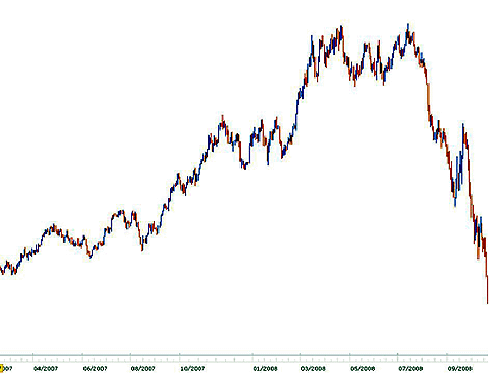It's better to get in on the start of a trend, rather than to be at the end of it. That's why traders are always looking to get in the door once the market signals a potential turn. And some even desire a better edge, maybe looking to get in before a trend reversal starts.
For those of us who can't predict the future, there are certain technical formations that can help support our inclinations that the herd may be changing directions. One such pattern is the tweezer. Although relatively unknown to the broader market, the tweezer may be one of the best indications that a short- (or long-) term trend may be nearing its end. Drawing similarities with the more popular double top/bottom, the tweezer can produce high probability setups in the foreign exchange market.
Double Tops/Bottoms: A Classic
One of the first technical formations that some are taught as students of technical analysis is the double top or bottom. The longer-term study is right up there with support and resistance, flags and pennants, and the doji. And it remains popular even today.
Simply, the double top (or bottom) reversal is a pattern that tends to form after a prolonged extension upward (or downward). It signifies that the energetic momentum from the previous uptrend has stalled, leaving the door open to potential weakness through significant selling pressure. The following battle between buyers and sellers lasts temporarily and ends with a final push upward before we see the price action decline. This final push creates a second peak in an otherwise stable channel pattern, forming a double top.
A textbook example of a double top appears in the EUR/USD currency pair shown in Figure 1. Here, the euro makes a high against the U.S. dollar just shy of the $1.6050 figure in April 2008. After two and a half months of stable, range-bound trading, buyers make a final push higher in July before surrendering to sellers. The result is a violent drop until final support is reached at just above the $1.2250 figure.
 |
| Figure 1 |
| Source: FX Intellicharts |
Tweezers: The New
Similar to the bearish diamond formation in popularity, tweezers (or kenuki) are relative unknown, partly because they are strikingly similar to double tops/bottoms. The key difference is in the timing of these two formations. Relatively reserved for the short term, tweezers are composed of two or more consecutive candle sessions. Any more than approximately eight to 10 candle sessions and we may well be looking at a double top or bottom percolating. However, given the short time frame, complete tweezer formations tend to happen quickly. Price is another important factor with the tweezer. In a top or bottom formation, the prongs have exactly the same high prices (in a tweezer top) or low prices (in a tweezer bottom). This idea is key as it establishes the fact that the price level itself was not broken.





No comments:
Post a Comment